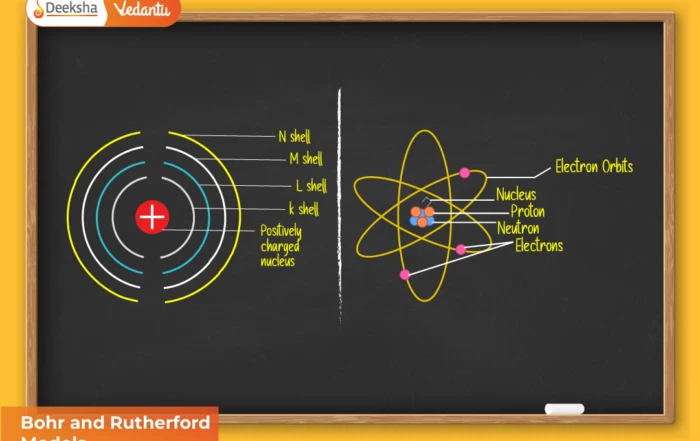Thermodynamics is one of the most vital areas of physical science, linking the worlds of chemistry and physics. It helps us understand how energy transforms between different forms – heat, work, and internal energy. Many chemical reactions and physical processes involve gases that can perform mechanical work or exchange heat with their surroundings. Understanding these energy changes allows us to predict system behavior, calculate energy efficiency, and interpret reaction feasibility.
The applications of thermodynamics are not limited to theoretical chemistry – they form the foundation of modern engineering, meteorology, and environmental sciences. From designing engines and refrigerators to studying molecular motion and biological metabolism, thermodynamic principles guide how energy transfer occurs in all systems.
Work
In thermodynamics, work represents the energy transferred by a system when it exerts a force over a distance. In this unit, we specifically deal with pressure–volume (P–V) work, which is the most common type of mechanical work performed by gases.
Understanding Pressure–Volume Work
Let us consider a cylinder fitted with a frictionless piston containing one mole of an ideal gas. The internal pressure of the gas is P, while the external pressure is Pₑₓₜ. If Pₑₓₜ > P, the piston moves inward, compressing the gas until the pressures become equal. Conversely, if P > Pₑₓₜ, the gas expands and pushes the piston outward.
When the volume changes from V₁ to V₂, the work done (w) is given by:
w = -Pₑₓₜ(V₂ – V₁)
The negative sign indicates that work is done on the system (during compression). If the gas expands, work is done by the system, making w negative. The sign convention in thermodynamics ensures consistent interpretation across energy changes.
For infinitesimally small changes in volume, the equation becomes:
w = – ∫ Pₑₓₜ dV
If the external pressure is constant throughout, the integration simplifies to the earlier equation. The concept of work becomes especially significant in analyzing real-life systems like gas engines, turbines, and air compressors.
Reversible and Irreversible Processes
A reversible process occurs infinitely slowly so that the system and surroundings remain in equilibrium at every instant. Such a process yields the maximum possible work output, as pressure differences are minimal. For an ideal gas undergoing a reversible isothermal process, the work done is:
wᵣₑᵥ = -nRT ln(V₂/V₁)
In contrast, an irreversible process occurs rapidly, often with a significant pressure difference between the system and surroundings. These processes are more realistic but yield less work output.
For free expansion, where Pₑₓₜ = 0:
w = 0
Here, the gas expands into a vacuum without resistance, performing no work.
Enthalpy (H)
(a) Definition and Importance
Enthalpy (H) is a thermodynamic state function that measures the total heat content of a system at constant pressure. It is defined as:
H = U + PV
where U is internal energy, P is pressure, and V is volume. When a system absorbs heat at constant pressure, the change in enthalpy (ΔH) represents that absorbed energy:
ΔH = qₚ
Thus, enthalpy is a direct measure of heat flow in chemical reactions carried out at constant atmospheric pressure – a common condition in laboratories and industrial setups.
The relationship between internal energy (ΔU) and enthalpy (ΔH) is:
ΔH = ΔU + Δ(PV)
For an ideal gas where PV = nRT:
ΔH = ΔU + ΔnRT
Here, Δn = nₚ – nᵣ, the difference between the moles of gaseous products and reactants. This equation is vital for calculating heat changes in chemical reactions.
(b) Extensive and Intensive Properties
In thermodynamics, we classify measurable quantities based on how they depend on system size:
- Extensive properties: Depend on the amount of matter (mass, volume, enthalpy, internal energy). Doubling the quantity doubles these values.
- Intensive properties: Independent of system size (temperature, pressure, density, concentration).
For instance, if the system is divided into two equal parts, temperature remains the same (intensive), but enthalpy and internal energy are halved (extensive).
(c) Heat Capacity and Its Significance
Heat capacity (C) quantifies how much heat is needed to raise the temperature of a substance by one degree Celsius or one kelvin:
q = C × ΔT
For a single mole of substance, molar heat capacity is defined as:
Cₘ = q / ΔT
Depending on the experimental conditions, heat capacity can be measured at constant pressure (Cₚ) or constant volume (Cᵥ):
- At constant volume: qᵥ = Cᵥ × ΔT = ΔU
- At constant pressure: qₚ = Cₚ × ΔT = ΔH
(d) Relationship Between Cₚ and Cᵥ for an Ideal Gas
The relation between the two heat capacities for an ideal gas is:
Cₚ – Cᵥ = R
This formula is widely used in calculations involving gases. For example, for a monoatomic gas, Cᵥ = 3/2 R and Cₚ = 5/2 R.
Understanding heat capacities is essential for predicting how much energy is required to heat gases or conduct thermodynamic processes efficiently.
Isothermal and Free Expansion of an Ideal Gas
In an isothermal process, temperature remains constant (ΔT = 0). According to the first law of thermodynamics:
ΔU = q + w
For an ideal gas, internal energy depends only on temperature, so ΔU = 0. Hence, heat absorbed (q) equals work done (w) in magnitude but has the opposite sign:
q = -w
For isothermal reversible expansion:
w = -nRT ln(V₂/V₁)
q = +nRT ln(V₂/V₁)
In contrast, for adiabatic processes (q = 0), no heat exchange occurs; thus, any work done results solely in a change in internal energy (ΔU = w). These concepts are foundational for understanding engines and refrigeration cycles.
NEET/JEE Practice Questions
- Question: Calculate the work done when 2 moles of an ideal gas expand isothermally and reversibly from 5 L to 10 L at 300 K. (R = 8.314 J mol⁻¹K⁻¹)
Answer:
w = -nRT ln(V₂/V₁) = -2 × 8.314 × 300 × ln(10/5) = -3458 J - Question: For a reaction, ΔH = –120 kJ and ΔU = –118 kJ. Calculate Δn for the reaction at 300 K.
Answer:
ΔH = ΔU + ΔnRT → Δn = (ΔH – ΔU) / RT = (–120 + 118) × 10³ / (8.314 × 300) = –0.80 mol. - Question: If Cₚ – Cᵥ = R for a monoatomic gas, find Cₚ and Cᵥ in terms of R.
Answer:
Cᵥ = (3/2)R; Cₚ = Cᵥ + R = (5/2)R. - Question: For 1 mole of an ideal gas, if ΔU = 150 J and ΔH = 200 J, find Δn at 300 K.
Answer:
ΔH = ΔU + ΔnRT → Δn = (200 – 150) / (8.314 × 300) = 0.02 mol. - Question: During an adiabatic compression of 1 mole of a gas, the temperature rises from 300 K to 500 K. If Cᵥ = 20 J mol⁻¹K⁻¹, calculate ΔU.
Answer:
ΔU = nCᵥΔT = 1 × 20 × (500 – 300) = 4000 J.
FAQs
Q1. What is the physical meaning of work in thermodynamics?
Work represents the energy transfer when a system expands or contracts against an external force. It connects the microscopic motion of particles to macroscopic energy changes observed in gas systems.
Q2. What is enthalpy and why is it important?
Enthalpy (H) represents the total heat content of a system at constant pressure. It allows chemists to predict whether a reaction is exothermic or endothermic and helps calculate energy flow in industrial and biological processes.
Q3. How are ΔU and ΔH related in chemical reactions?
They are related as ΔH = ΔU + ΔnRT. This relationship accounts for the expansion work of gases. In reactions where the number of gaseous moles changes, ΔH and ΔU differ significantly.
Q4. What is the significance of reversible and irreversible processes?
Reversible processes are idealized cases that yield maximum work output and occur infinitely slowly. Irreversible processes, while more practical, involve losses due to friction or sudden pressure changes and thus produce less work.
Q5. How do heat capacities Cₚ and Cᵥ differ?
Cₚ measures the heat capacity at constant pressure, including the energy required for expansion, whereas Cᵥ measures it at constant volume where no expansion work occurs. Their difference (Cₚ – Cᵥ = R) reflects this extra work done at constant pressure.
Q6. Why is enthalpy considered a state function?
Enthalpy depends only on the initial and final states of a system, not on the path followed to reach them. Whether heat is added quickly or slowly, ΔH remains the same for a given process.
Q7. What real-life applications use thermodynamic work principles?
Thermodynamic work principles are applied in designing engines, power plants, refrigerators, and even weather models, where pressure-volume relationships govern energy transformations.
Conclusion
Thermodynamics provides a systematic way to understand how energy moves between systems and surroundings. From analyzing pressure–volume work to calculating enthalpy changes and heat capacities, these applications bridge theory and real-world engineering. Whether in the combustion of fuels, refrigeration cycles, or atmospheric phenomena, thermodynamic laws govern every energy transformation. Mastery of these concepts equips students for success in NEET, JEE, and beyond – forming a foundation for future exploration in physics, chemistry, and applied sciences.











Get Social